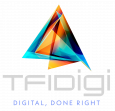Digital marketing, a once-niche segment of advertising, has taken the reins in steering the global marketing sector. A confluence of technological advancements, changing consumer habits, and more intuitive advertising methods paints an optimistic picture for its future. Delving into recent statistics and predictions helps in gaining a comprehensive understanding of its direction.
1. Skyrocketing Industry Value
By 2026, the digital marketing industry is set to soar, with projections valuing it at a staggering $807 billion. This explosive growth reflects the significance and effectiveness of digital platforms in today’s consumer-driven market.
2. Device Preferences in Ad Spending
In 2023, desktops account for 39% of the ad spending share, with smartphones leading at 61%. This dynamic is poised for further change; by 2026, desktops are expected to shrink to 31%, while mobiles will command a dominant 69%. This shift underlines the increasing reliance on mobile devices as primary mediums for content consumption.
3. The Supremacy of Programmatic Advertising
Non-programmatic ad spending is becoming less significant, holding just 16% share in 2023. Conversely, programmatic advertising, with its automated, data-driven ad placements, boasts an 84% share, emphasizing its efficiency and precision in ad delivery.
4. ROI and Organic Searches
Nearly half of marketers (49%) believe organic search offers the best ROI. Given that Google, the world’s largest search engine, processes a mind-boggling 8.5 billion searches daily in 2023 and caters to 92% of global searches, this statistic underscores the immense potential of search engine optimization.
5. Measuring Success in Digital Marketing
One-fifth of businesses determine the success of their digital marketing strategies by the number of leads generated. This metric offers tangible evidence of an advertisement’s effectiveness and its ability to drive consumer action.
6. Marketing Budget Allocation
Gartner’s survey reveals a decisive tilt towards digital platforms, with 72% of the marketing budget being allocated to digital marketing. This heavy investment signifies its unrivaled importance in contemporary marketing strategies.
7. Job Prospects in Marketing
The demand for marketing jobs is on an upward trajectory. The Bureau of Labor predicts a 10% increase in marketing job demand by 2026, highlighting the industry’s vitality and the burgeoning need for professionals skilled in digital strategies.
8. The Power of Customer Feedback
Businesses that actively respond to customer reviews at regular intervals see a 50% higher spend from their customers. Additionally, over 90% of consumers consult online reviews before making a purchase decision. This emphasizes the undeniable influence of customer feedback in shaping purchasing behaviors.
9. Brand Awareness and Digital Advertisements
Digital advertising isn’t just about immediate conversions. It plays a crucial role in brand-building, with stats showing an 80% increase in brand awareness through digital ads.
10. The Adoption of CRM Software
With 62% of marketers leveraging software for Customer Relationship Management (CRM), it’s evident that businesses are focusing on nurturing long-term customer relationships, ensuring personalized experiences and consistent engagement.
In Conclusion
The data and predictions sourced from authorities like TechJury, Statista, Wikipedia, Gartner, Bureau of Labor, WordStream, and Hubspot encapsulate a clear trajectory for digital marketing: continuous growth, adaptability, and an unwavering focus on consumer-centric strategies. As businesses and marketers align their efforts with these trends, the future of digital marketing promises unprecedented innovation and success.
